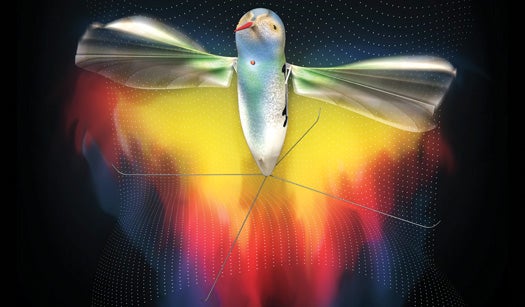How Darpa’s Tiny Robotic Hummingbird Hovers and Films
In 2006, Darpa, the Department of Defense’s R&D arm, commissioned AeroVironment, a company specializing in remote aircraft, to create an...

In 2006, Darpa, the Department of Defense’s R&D arm, commissioned AeroVironment, a company specializing in remote aircraft, to create an unmanned aerial vehicle (UAV) small enough to fly through an open window. AeroVironment had already built the 4.5-foot-wingspan Raven, which first saw combat over Afghanistan in 2003, but making a UAV so much smaller took five years and 300 different wing designs.
_
Click here to discover how the hummingbird flies and rolls._
Finally, AeroVironment has a working prototype: the 6.5-inch-wingspan Nano Hummingbird. “It was never our intention to copy what nature has done; it’s just too daunting,” says Matt Keennon, the UAV’s head researcher. The camera-equipped bird beats its wings 20 times a second, whereas hummingbirds clock up to 80. Still, it can hover like the real thing, plus perform rolls and even backflips. Here’s how the bird flies.
Wings
A skeleton of hollow carbon-fiber rods is wrapped in fiber mesh and coated in a polyvinyl fluoride film.
Camera
The camera angle is defined by the pitch of the Nano’s body. Forward motion gives the operator a view of the ground, aiding navigation. Hovering is good for surveying rooms.
Body
It weighs 18.7 grams (less than an AA battery). The craft is remote-controlled, but an onboard computer corrects speed and pitch.

To Turn

To Move Forward

To Roll